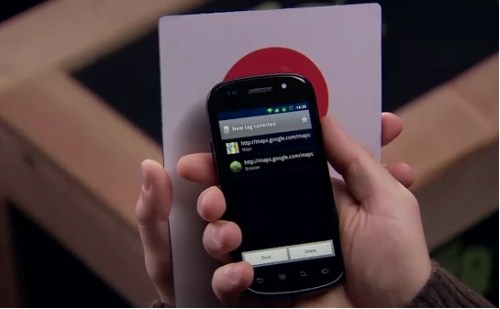 Editor’s note: This discussion about mobile payments and commerce is one of the five themes we’ll debating at the VentureBeat Mobile Summit, on April 25-26. We’ve carefully invited the top mobile executives to help solve what we think are the biggest challenges in mobile. And for payments, we’ll have the top executives in the sector around the table, including representatives from Verizon, AT&T, Sybase, Boku, Zong, Visa, Square and disruptive credit card company Dynamics. (If you think you should be part of the discussion, you can apply for a ticket. More on the series here.)
Editor’s note: This discussion about mobile payments and commerce is one of the five themes we’ll debating at the VentureBeat Mobile Summit, on April 25-26. We’ve carefully invited the top mobile executives to help solve what we think are the biggest challenges in mobile. And for payments, we’ll have the top executives in the sector around the table, including representatives from Verizon, AT&T, Sybase, Boku, Zong, Visa, Square and disruptive credit card company Dynamics. (If you think you should be part of the discussion, you can apply for a ticket. More on the series here.)
The Web is abuzz about the impact near-field communication (NFC) will have on payments in the not so distant future. Proponents propose that tapping your phone to pay is a vastly better consumer experience than swiping a credit card and more major players are jumping onto the NFC train every day.
But what’s really going to make NFC and mobile payments interesting are the apps that add value to the consumers and the merchants alike.
Google has the NFC enabled Nexus S, three of the major carriers in the US have formed the ISIS mobile payment group, and there are rumors swirling about NFC in the next iPhone. But will NFC really provide enough benefit to consumers to make them put away the plastic? Credit cards enjoy an install base that NFC won’t see for years, and the experience with credit cards is already pretty amazing. You swipe your card and the transaction goes from merchant to issuer and back to merchant in seconds. You don’t even have to sign for most transactions under $25 (per Visa/MasterCard rules).
In fact, some of credit cards are already NFC enabled – you may even have one in your wallet right now but, chances are, you never even think to tap at checkout. The truth is that NFC, in and of itself, provides very little added value to the consumer experience at point-of-sale (POS), and certainly not enough to turn the tides away from plastic. The real opportunity presented by NFC isn’t about increased speed or reduced friction in transactions. So, what’s the big deal?
Smart Phones vs. Dumb Cards
To put it bluntly, your credit card is optimal only for what it is: a payment instrument. Unlike a phone, a credit card doesn’t have its own processor, it’s not directly connected to the Internet, and it absolutely doesn’t have access to all of the smart apps that can add value to each transaction. Sure, it can let me buy what I want, but it can’t tell me if that new Hawaiian shirt is a good financial (or fashion) decision or, automatically do the paperwork for me to collect the rebate on that LED TV). NFC enabled phones may finally have enough benefit to consumers and merchants to be the first technology to offer enough added value to replace credit cards.
Some relevant data about who’s using what:
- The average American consumer carries roughly 3.5 credit cards
- Globally there are 94 million PayPal accounts and growing
- Nearly 300,000,000 smartphones were shipped in 2010 alone, estimated to be over 400,000,000 in 2011
- Mobile payments accounted for $162 billion in global transactions in 2010 alone and are predicted to reach $984 billion by 2014
With an NFC enabled smartphone, and a payments network to process billing, consumers can have all of their payment options available right on their phone, and they can choose whether they want to make a purchase via credit card, PayPal, Amex’s Serve, or direct mobile billing. Choose your payment option, tap, and you’re done.
The NFC Experience
 The real added value to the consumer experience is in apps. By “apps,” we don’t mean Angry Birds. We’re talking about “apps” as a group of feature-rich tools that are installed on a mobile device and connected to the cloud – everything from your calendar to a pedometer. With NFC enabled phones powering the world’s transactions, the following scenarios are not that far off:
The real added value to the consumer experience is in apps. By “apps,” we don’t mean Angry Birds. We’re talking about “apps” as a group of feature-rich tools that are installed on a mobile device and connected to the cloud – everything from your calendar to a pedometer. With NFC enabled phones powering the world’s transactions, the following scenarios are not that far off:
- You’ve been out shopping all day; you used credit cards, PayPal/Serve, and direct mobile billing. Because your phone was synced with Quicken/Mint, your transactions across all of your accounts are posted in real-time, and you’re alerted that you are about to go over budget with a real-time message.
- You’re a huge foodie, and you discovered this awesome new taco truck that you think all of your friends should know about. When you pay with your phone, which is already connected to Facebook, you instantly get checked in and you get to tell your friends all about your delicious new find.
- You’re at a business dinner and you use your NFC enabled phone to pay for the meal. Because your phone knows that you’re at a restaurant, it immediately pulls up a tip calculator with your tab already factored in. One tap to add the tip and you look like the smartest person in the room.
- You’re buying groceries and your phone automatically suggests that you use your Visa over your MasterCard because your Visa gives you 5% cash back on all food purchases.
Of course, all of these applications are just a taste of what NFC on your smartphone can do. There’s a ton of disruption happening in the payments space, and it’s a very exciting time with a ton of really cool functionality on the horizon. The best part about it all is that, in the end, the consumer wins.
 Ron Hirson is the co-founder and SVP of Boku. He submitted this story to VentureBeat as part of a series leading up to our Mobile Summit later this month.
Ron Hirson is the co-founder and SVP of Boku. He submitted this story to VentureBeat as part of a series leading up to our Mobile Summit later this month.

